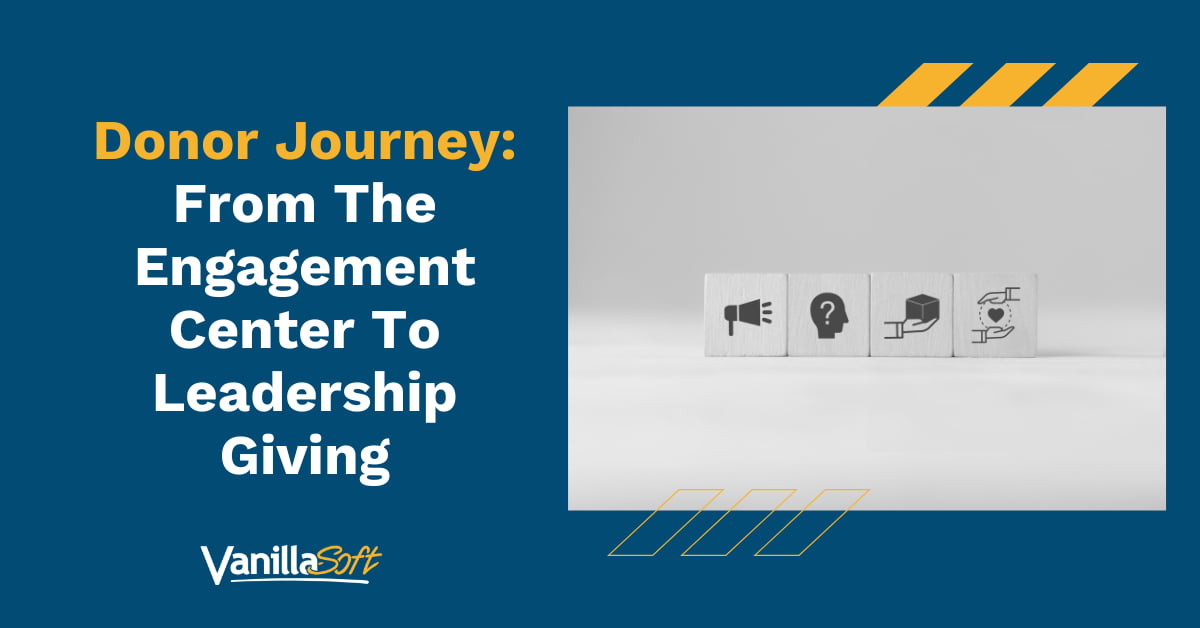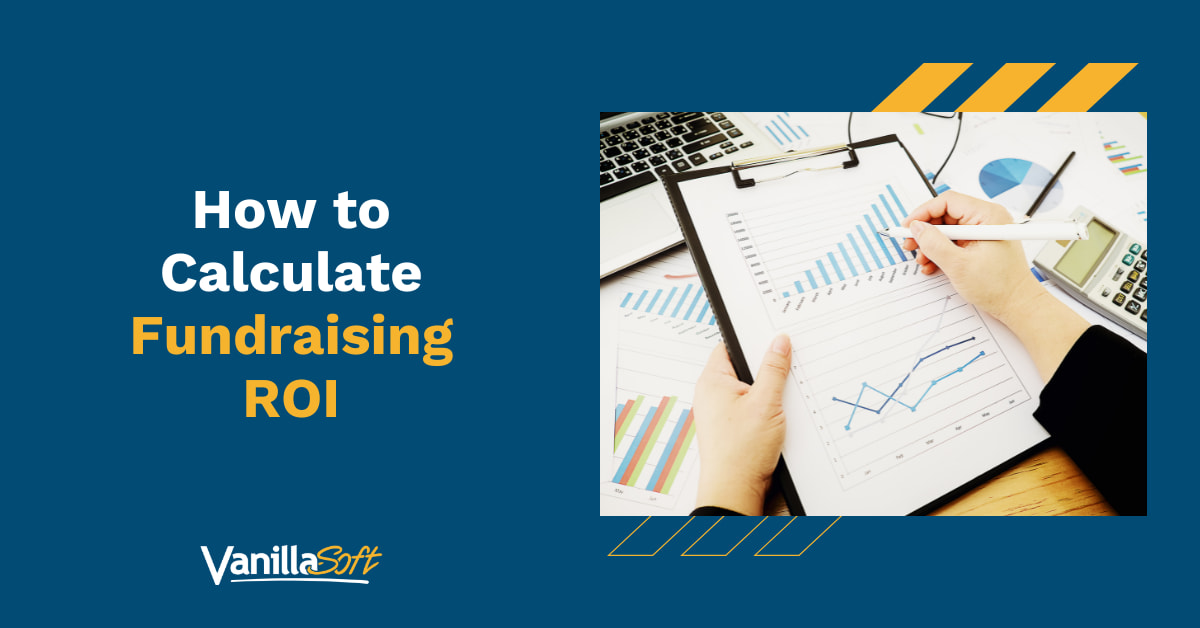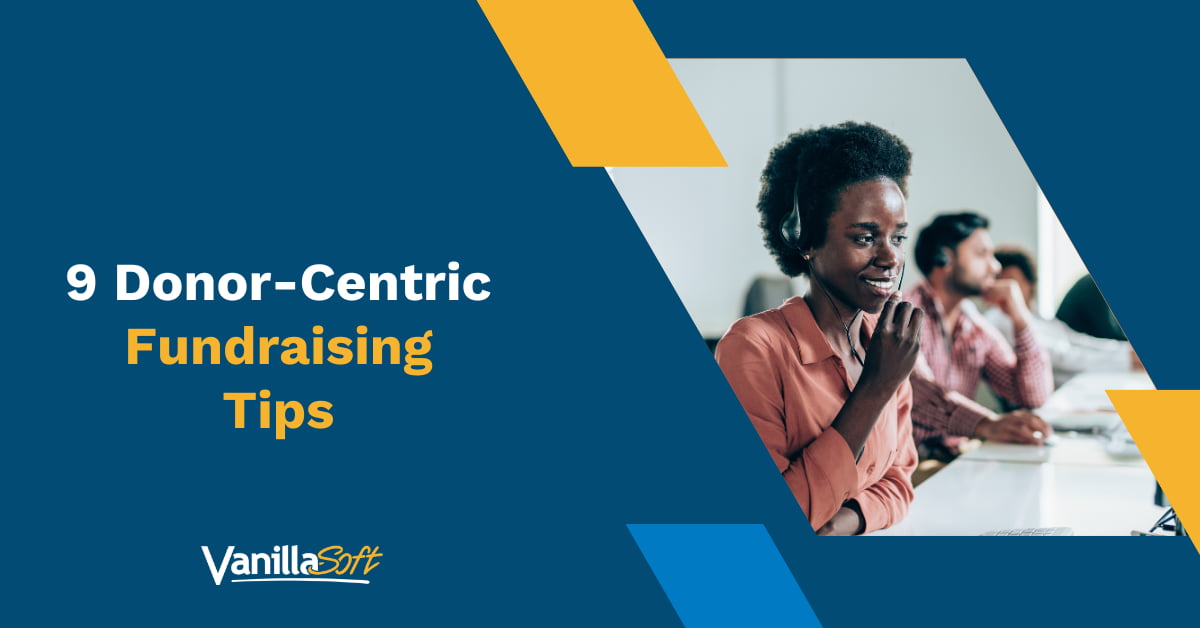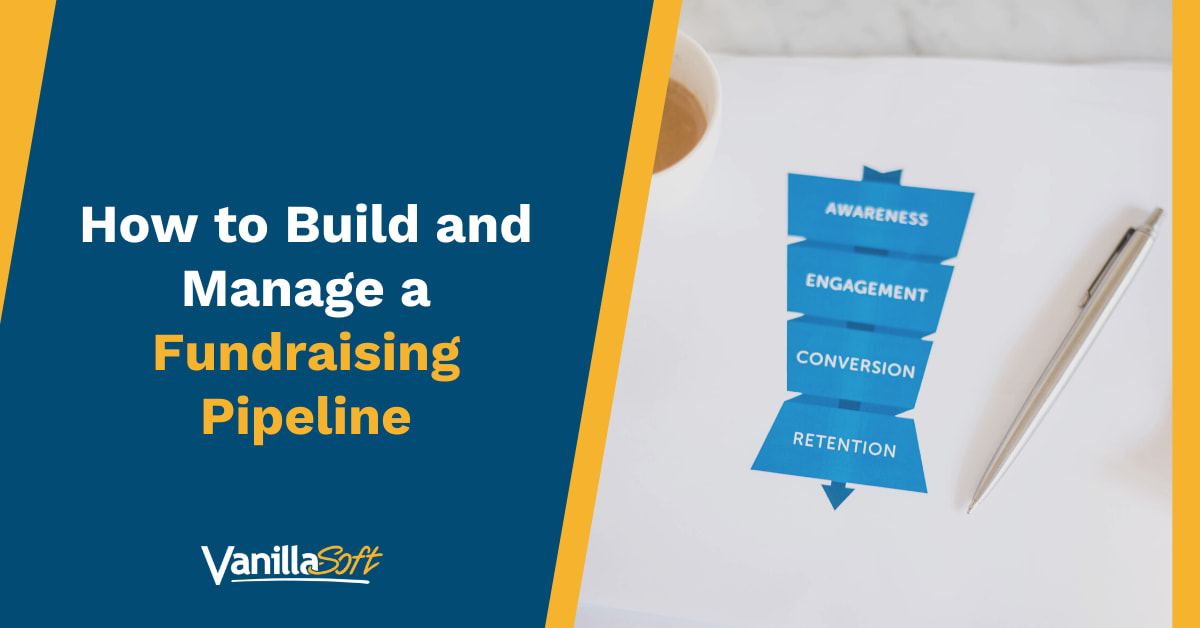
Turning a casual supporter into a dedicated advocate, one who champions your institution for years to come requires more than just an inspiring mission statement or an occasional email, call, or text. This is a process that resembles a carefully orchestrated journey — one built on strategic nurturing and a deep understanding of where donors are in their relationship with your university at any moment.
To facilitate this approach, the concepts of the donor journey and the Engagement Center come into play. Imagine the Engagement Center as your mission control hub. It’s where you gather valuable donor insights, track interactions, and personalize your outreach for a profoundly resonant experience.
In this blog post, we’ll talk about how to better understand each donor and identify where they are in their unique, individual journeys so that you can act accordingly and steward them along the way.
Bear in mind that the ultimate goal of the donor journey isn’t the same for each individual — some will reach the heights of leadership giving while others might be anchored comfortably in the realm of consistent annual gift-level support.
Create a Donor Journey Map
The donor journey often is not linear. It’s not as simple as presenting your cause and soliciting a gift right away. You first need to build trust and establish a genuine connection, which is a process.
By mapping this journey, you can build a donor pipeline and pave the way for lasting relationships.
A donor journey map is a critical tool to help you visualize the various stages a potential donor progresses through as they build their relationship with your organization. This framework finds its roots in the sales and marketing world, specifically within the AIDA (Awareness, Interest, Desire, Action) model.
1. Awareness
You need to grab the attention of potential donors with your organization’s story, mission, and the impact of your work. The most effective channels to use in this stage include social media, compelling ads in relevant publications, and impactful email campaigns.
2. Interest
Once your prospects are aware of your institution and its fundraising goals, it’s time to spark their interest. In other words, give them additional information about why you need the gifts, and how and who their support will help (i.e., students). Invite potential donors to webinars, send informative newsletters, share success stories, and offer virtual campus tours. The point is to engage them more deeply in the cause, allowing them to see firsthand the transformative power of their potential contributions.
3. Desire
This stage is all about fostering a desire to give. At this stage, donors have moved beyond mere interest — they strongly connect with your organization’s mission. Nurture this desire through personalized storytelling, highlighting the direct impact their donations could have.
4. Action
This is where a donor’s desire translates into a financial contribution. Make the giving process accessible through a seamless online donation form or facilitate phone conversations with giving officers.
5. Stewardship & Advocacy
There’s a stage beyond the AIDA framework which revolves around stewardship and advocacy. The donor journey doesn’t end with a single gift. The most dedicated donors become advocates who fervently support your university and help spread the word. Continuously cultivate these relationships through personalized updates, recognition opportunities, and invitations to engage further.
By outlining this donor journey, you’ll identify potential gaps in your outreach or opportunities to refine your messaging at each stage.
How the AIDA Model Can Help You Refine Your Fundraising Efforts
Most university fundraising efforts start with segmenting your audience, which is a great way to personalize your outreach and avoid the pitfalls of marketing automation. Typically in fundraising, segmentation is based on the giving history.
Has someone given a gift previously?
When did they make that gift?
How much was it?
How many times have they given?
Have they been consistent with their gifts?
All these questions are very relevant and will point you in the right direction, but there’s a catch: someone’s giving history isn’t indicative of their level of awareness of university advancement and the actual reasons behind your fundraising mission.
Some people give because they’re proud of their alma mater and grateful for the education they received. Others give because they want to contribute to the greater good. And there are those who will give, albeit in smaller amounts, because someone from your fundraising team called them and asked for a donation.
All these people might already be your donors, but that doesn’t mean they have a deeper understanding of your mission and a meaningful connection with your institution.
Therefore, it’s essential to compare their giving history against the AIDA model and see if there is untapped potential for them to give more if you increase their awareness and interest through targeted campaigns.
Donor Pyramid vs. The Funnel: Understanding Donor Progression Models
Fundraising traditionally relies on the idea of the Donor Pyramid to illustrate and understand donor progression. Shaped like a classic pyramid, the wide base represents a large number of supporters making smaller gifts, gradually narrowing as you move upward with fewer donors giving at ever-increasing amounts, all the way to those who give major, transformative gifts.
The emphasis is on encouraging donors to “climb” this pyramid by consistently increasing their gifts.
On the other hand, the concept of the Funnel, again borrowed from the sales vocabulary, is a dynamic representation of the donor journey. Imagine a funnel: it starts wide with many prospects but narrows as those prospects are sifted through and nurtured toward becoming committed supporters. This model acknowledges that not every interaction results in a gift, focusing instead on the importance of building relationships and demonstrating your institution’s impact.
This is a more dynamic representation of the donor journey. You start with a large pool of prospects and, through engagement and appeals, nurture them into loyal donors.
It emphasizes the process of engagement and conversion. Some prospects inevitably drop out at each stage, hence the funnel shape.
If we use the Funnel principle, the top is where you cast a wide net and try to attract as many prospects as possible through social media and automated yet personalized marketing campaigns. The Engagement Center allows you to track engagement and siphon the interested donors further down the funnel, where they will be handed off to a student fundraiser for a one-on-one call.
The key is to identify the most engaged prospects and qualify them as fit to be forwarded to the DXO level. Some of them will have reached their full giving potential at this point, while other donor relationships will be additionally cultivated and moved on to the leadership giving team and, ultimately, to major gift officers.
How to Qualify Your Donors: Data with a Human Touch
In reality, modern fundraising uses aspects of both the Pyramid and the Funnel to create a holistic donor engagement strategy. The key is to understand that each donor is on a unique journey, moving toward deeper involvement at their own pace.
But, it’s important to establish what parameters to use to qualify and move them to the next stage, for example, when they’re warm or ready enough to be qualified from the mass marketing stage to the Engagement Center (EC) or from the EC to the Digital Experience Officer (DXO) portfolio.
This is something that each institution should do, as these aren’t one-size-fits-all criteria. And what you need for this to work is a lot of data and analytics.
For example, a sign of engagement could be a prospect opening your emails regularly, attending your events, or making gifts consistently. Each of these breadcrumb events is a parameter and can help you determine when a particular donor is ready to be upgraded.
Still, even though someone might tick all the boxes and seem like a great DXO or Major Gift candidate, in reality, things might be different. That’s where the Student Engagement Officer (SEO) or DXO expertise is crucial, as they’re the ones having direct contact with the prospect and can assess their readiness beyond purely data-driven indicators.
For example, someone might be very engaged and willing to contribute, but the DXO might have discovered, through deeper conversation and discovery, that they’re planning on pausing their contributions until they reach retirement age in order to get their finances in order. Such insights will save you a lot of resources and allow you to plan your strategy more accurately.
Engage Your Donors with Cadences
Cadences, or a series of strategically planned multi-channel touchpoints, are at the heart of the donor journey. They allow you to guide your prospects throughout their donor journey using targeted and tailored communication. This will help you generate really clean data you can use later to inform future strategies.
The goal of each cadence is to gently nudge donors toward the next stage of their relationship with your organization. Whether it’s piquing their initial interest, deepening their connection to your cause, or ultimately inspiring a significant gift, cadences ensure consistent and impactful outreach that feels personalized, not pushy.
Think of cadences as a well-choreographed dance. Each step — whether it’s an email, a thoughtful voicemail, or a timely phone call — builds upon previous interactions. The rhythm and flow of your cadences will depend on the donor segment. For instance, new donors might receive a welcome series with an introduction to your organization, while potential major donors might receive more personalized communication at a less frequent pace.
The beauty of the Engagement Center lies in its ability to automate and track these cadences. Your team can set up a seamless flow of communications, ensuring a consistent donor experience without sacrificing personalization.
In Conclusion
The donor journey is a dynamic and multifaceted process. By understanding the stages, leveraging the power of the Engagement Center, and utilizing tools like segmentation and cadences, you unlock the potential to nurture meaningful relationships with your donors. Remember, each donor is on their own unique journey. With personalized attention and a strategic approach, you can guide them toward fulfilling their giving potential and becoming dedicated advocates for your cause.



